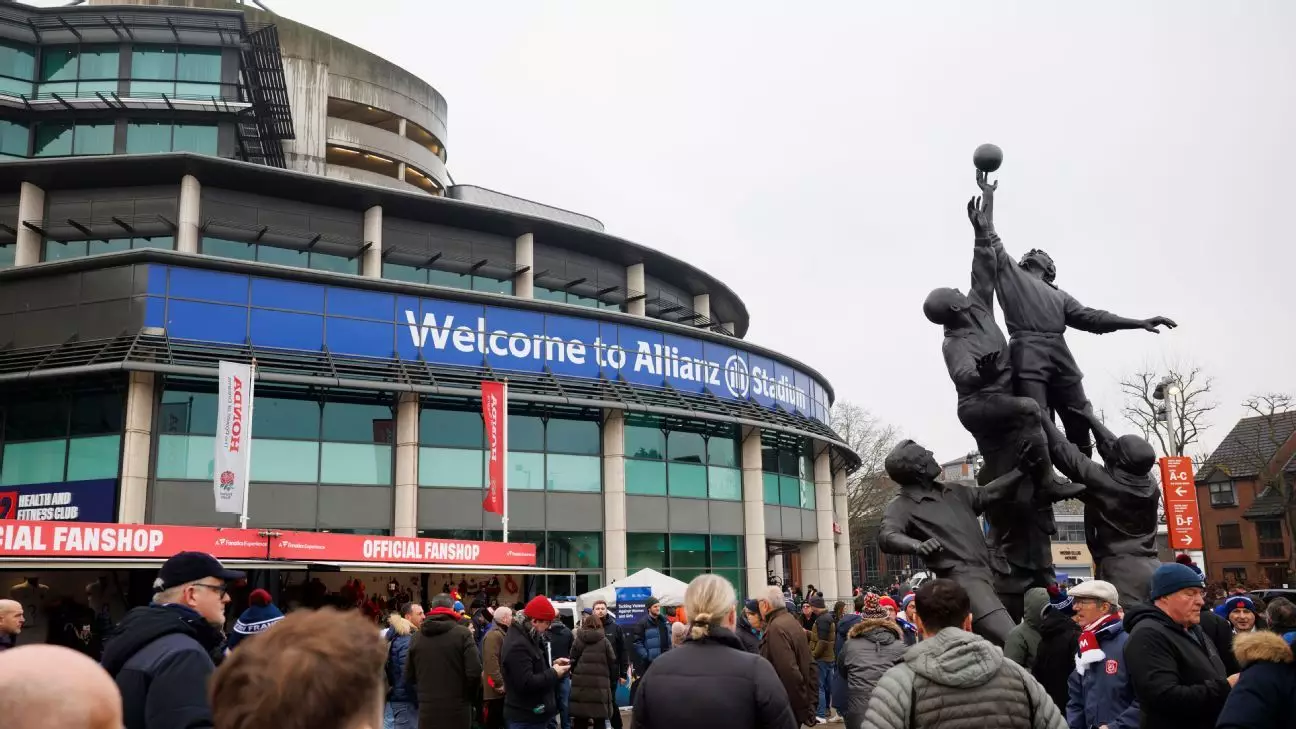In a surprising twist, the Rugby Football Union (RFU) has indicated its willingness to entertain discussions around sharing Twickenham Stadium with Chelsea Football Club during the latter’s anticipated redevelopment of Stamford Bridge. Under the auspices of RFU CEO Bill Sweeney, this potential partnership opens up an array of possibilities for both sports entities, albeit with a myriad of logistical and bureaucratic hurdles to navigate.
The heart of the matter lies in Chelsea’s previous reluctance to consider Twickenham solely as a temporary venue, stemming from both fan sentiment and the club’s long-standing ties to Stamford Bridge. However, with whispers of extensive renovations at their iconic ground, the conversation is now shifting. The prospect of an 82,000-capacity stadium hosting Chelsea matches injects an exhilarating dynamic into both the sporting and economic landscapes of south-west London.
Financial Necessity Meets Arena Ambition
For the RFU, the collaborative scenario transforms into a potential lifeline after experiencing a record financial loss in the previous year. Hosting Chelsea matches, combined with Sweeney’s ambition to diversify revenue streams through non-rugby events, could pave the way for a much-needed financial turnaround. This shift from strictly rugby-centric events signifies an evolution in the RFU’s strategy, aiming to maximize the use of an iconic facility that often stands vacant outside the rugby season.
Yet, it’s essential to recognize that the RFU’s aspirations are expansive and encountered by practical limitations, most notably the existing restrictions on non-rugby events. Currently, Twickenham is capped at hosting just three such events per year, with a maximum attendance of 55,000 fans. Any hope of increasing these allowances would hinge on spirited negotiations and the approval of local authorities, specifically Richmond Council, which has historically prioritized resident concerns over commercial interests.
Local Sentiments: A Delicate Balancing Act
Concerns from local residents pose another significant challenge to this ambitious ground-share arrangement. Sweeney himself acknowledged the sensitivities at play, noting that Richmond Borough would likely weigh the impact of increased foot traffic, noise, and other externalities against the financial benefits of a shared arrangement. The local council’s focus on community sentiments underscores the need for a carefully balanced approach; therefore, engaging the local community early in the discussions is imperative.
Furthermore, it’s essential to contemplate the cultural resonance of such a proposal. Twickenham is steeped in rugby tradition, while Chelsea represents a different sporting ethos. Merging these could foster a unique sporting narrative but may also stir discontent among rugby purists who view the stadium primarily as a cathedral of their beloved sport.
The prospect of ground-sharing is not merely about logistics and financial arrangements; it represents a significant moment of intersection for rugby and football in London. As both bodies engage in discussions, the sports community and local residents alike will be watching closely to see if this potential partnership can overcome the barriers it faces, serving as a beacon of cooperation amidst competition.

Leave a Reply